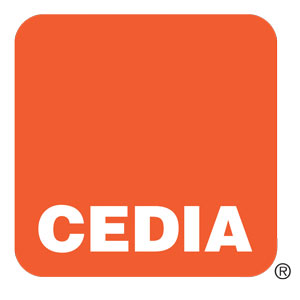
|
|
Contributed by the Custom Electronic Design & Installation Association. To learn more about CEDIA membership visit www.cedia.org/join. |
Recently the Custom Electronic Design and Installation Association (CEDIA) released key findings from the annual market research report, Size and Scope of the Residential Electronic Systems Market in the US©. The report is a part of CEDIA’s research offerings, which are designed to provide CEDIA members, industry businesses, and other key stakeholders with market data that will enable them to make better business decisions.
The report features data on the characteristics of companies working within the residential electronics systems industry in the United States, revealing the current number of installation companies in the industry, the size of the workforce, trends, forecasts, and the economic impact of the industry. Some of the key findings may help you decide where to put your focus when it comes to residential installations.
Mobile Device Integration Within Control Systems: 90 percent of dealers installing control systems are integrating a mobile device for control, with 33 percent indicating it is the primary control device. iOS (Apple) dominates as the most common mobile platform used. Forty-one percent of all dealer channels indicate that client attitudes are changing and more and more of their clients express interest in mobile access and control.
Many of your clients are asking for mobile access to their home systems; carve out the time to learn more and turn this into a potentially highly profitable opportunity. CEDIA recently released two white papers in a series on mobile device integration. The first white paper focuses on why a home technology business needs an enterprise-grade wireless infrastructure strategy; the second white paper offers 10 steps that pave a roadmap to creating a profitable and repeatable Wi-Fi solution. The new white papers are available free of charge for CEDIA members and $9.99 for non-members at www.cedia.org/marketplace. Additional white papers on this topic will be released later this year.
Home Networking Systems: The average number of installations is projected to be up by 40 percent in 2012 from 2011, but with a low average project size of $900.
It’s a fact: The residential network is rapidly becoming the backbone of virtually every low-voltage subsystem in the home. What was once used just for printer sharing and low-stakes Internet access is now handling voice, data, entertainment, surveillance, medical sensors, telepresence, system control, and more.
The good news is that IP is not some “double-secret” proprietary language only available to a select few special people, or an ever-changing technology that is always a moving target and impossible to keep up with. Internet Protocol (IP) is a well-established and versatile language, used the same way by everyone, consistent around the world, and taught in a variety of ways to all kinds of people. CEDIA offers an online introduction course, IP for Technicians, which is available on demand in the course section at wwww.cedia.net/elearning.
Home Theater/Audio Systems: The average number of installations for 2011 and projected for 2012 remains steady. The average project size was $20,000 for home theaters and $11,000 for audio systems.
According to the report, more than 30 percent of security installation companies surveyed are already offering distributed audio and video to their clients. Do you fall in this group? If you have not started offering this to your clients, it’s a good option to look into to diversify your business. CEDIA offers a variety of online and hands-on training. Check out the online options at www.cedia.net/elearning. If hands-on training is more up your alley, CEDIA will be offering EST Basic Residential and EST Home Theater Boot Camp this fall. To learn more about this training or to register visit www.cedia.net/bootcamp.






